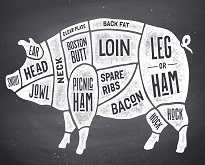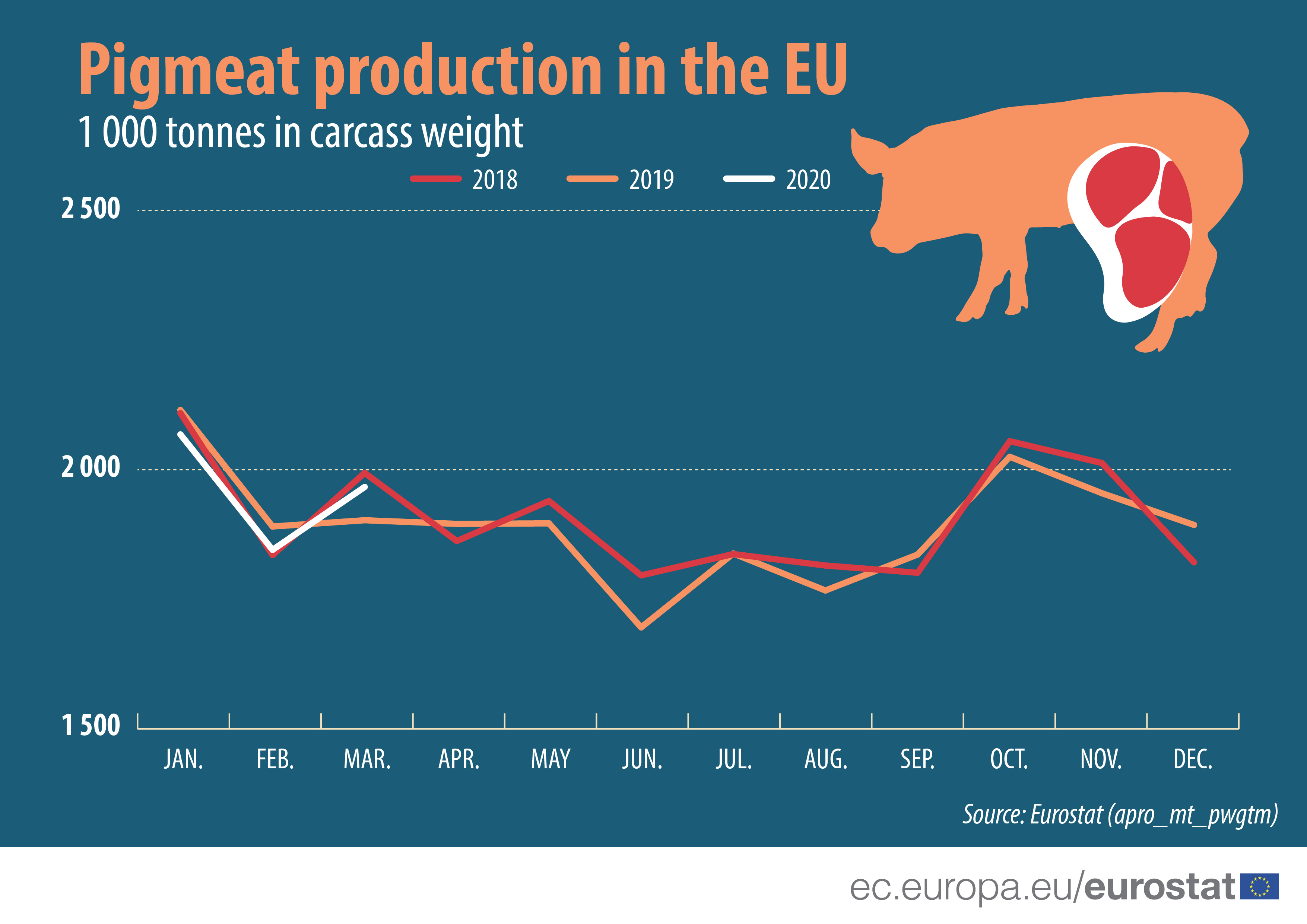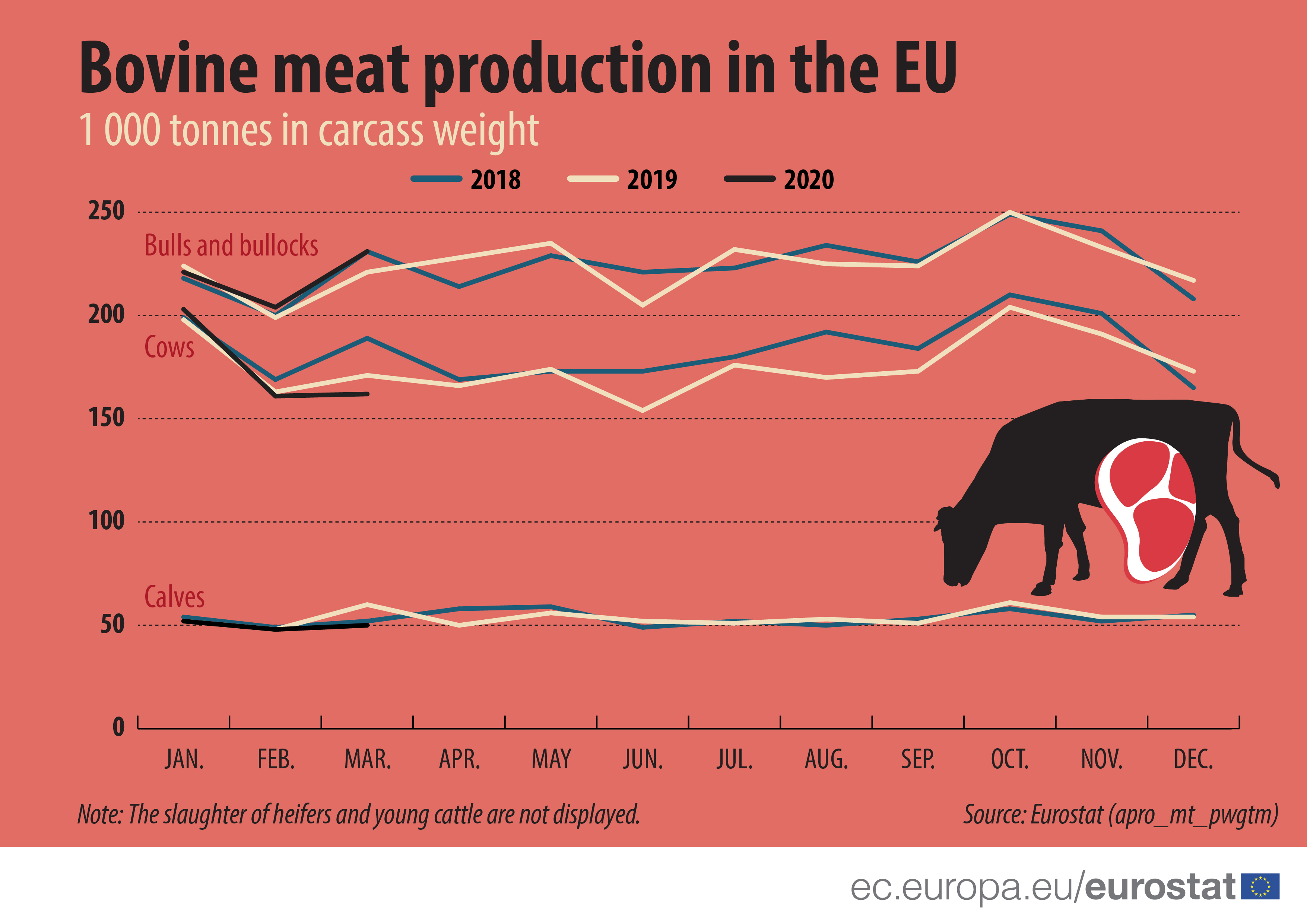In March 2020, EU slaughterhouses produced 2.0 million tonnes of pigmeat (in carcass weight) and 0.6 million tonnes of bovine meat. Compared to March 2019, these latest monthly figures represent an increase of +3.3% in the production of pigmeat and a small decline of -0.4% in bovine meat.
These figures suggest that the production of these meats in the EU was not immediately affected by the containment measures for the COVID-19 pandemic that began to be enforced during the course of March 2020.
Source dataset: apro_mt_pwgtm
The apparent stability in the production of bovine meat comprises contrasting developments in the slaughter of calves (-4.3% lower in March 2020 than March 2019) and of cows (-5.7%) with that of bulls and bullocks (+4.5%). In the case of calves and bulls and bullocks, slaughtered production levels in March 2020 were close to those in March 2018. It should be noted that calves and cows come from dairy farms, whereas bulls and bullocks are grown for their meat only.
Source dataset: apro_mt_pwgtm
The EU figures reflect the developments in each of the Member States. Pigmeat production in March 2020 was higher than March 2019 in a number of key producing Member States; these included the Spain (+12.7%), Netherlands (+6.1%), Germany (+3.9%), France (+1.4%) and Poland (+1.3%).
The overall decline in the quantity of meat from cows at EU level between March 2020 and March 2019 was driven by the falls in Italy (-41.5%), Poland (-10.7%), and Germany (-6.5%), which more than offset the rises in France (+1.1%) and the Netherlands (+19.8%). The overall decline in the quantity of meat from calves at EU level was principally derived from the falls in Italy (-10.9%), the Netherlands (-8.0%), Belgium (-7.3%) and France (‑5.5%). The considerable declines in Italy largely reflect the ongoing restructuring of the bovine industry.
Methodological notes:
- Statistics on slaughtering in slaughterhouses are elaborated by the EU Member States and Switzerland under Regulation (EC) No 1165/2008. A slaughterhouse is an officially registered and approved establishment used for slaughtering and dressing animals whose meat is intended for human consumption. The statistics cover the monthly numbers of slaughtered animals and the carcass weight of slaughtered categories of bovines, pigs, sheep, goats and poultry. A month is usually compared with the same month of the previous year to compensate for seasonal changes. Note that monthly poultry data are generally confidential.
- Slaughtering activity is an intermediate step between producers and consumers. The changes in the average weight of the animal categories may reflect various issues, such as that the farmers tend to renew faster the herd, that the meat market is attractive, that the consumers are asking for lighter animals, or simply seasonal changes.
- A more complete analyses of meat production would also consider the extra-EU trade of live animals and the slaughtering carried out elsewhere than in slaughterhouses. These data are not yet available and, in the case of the latter, are estimated on a monthly basis only in the rare cases when they are significant.
Note: The European Union (EU) includes 27 Member States. The United Kingdom left the European Union on 31 January 2020. Further information is published here.
To contact us, please visit our User Support page.
For press queries, please contact our Media Support.



